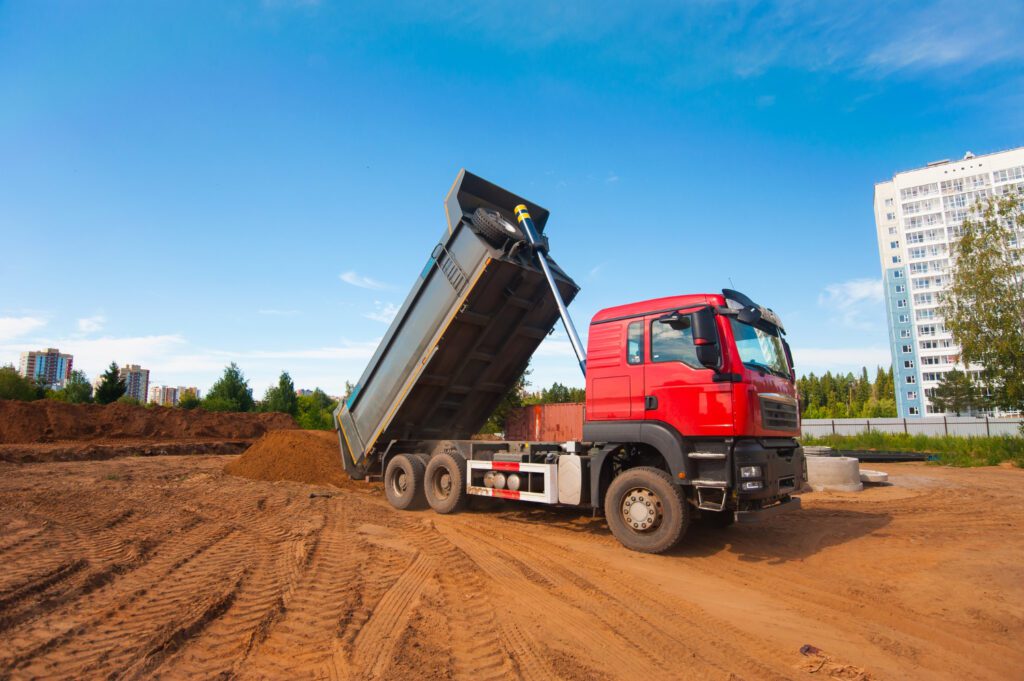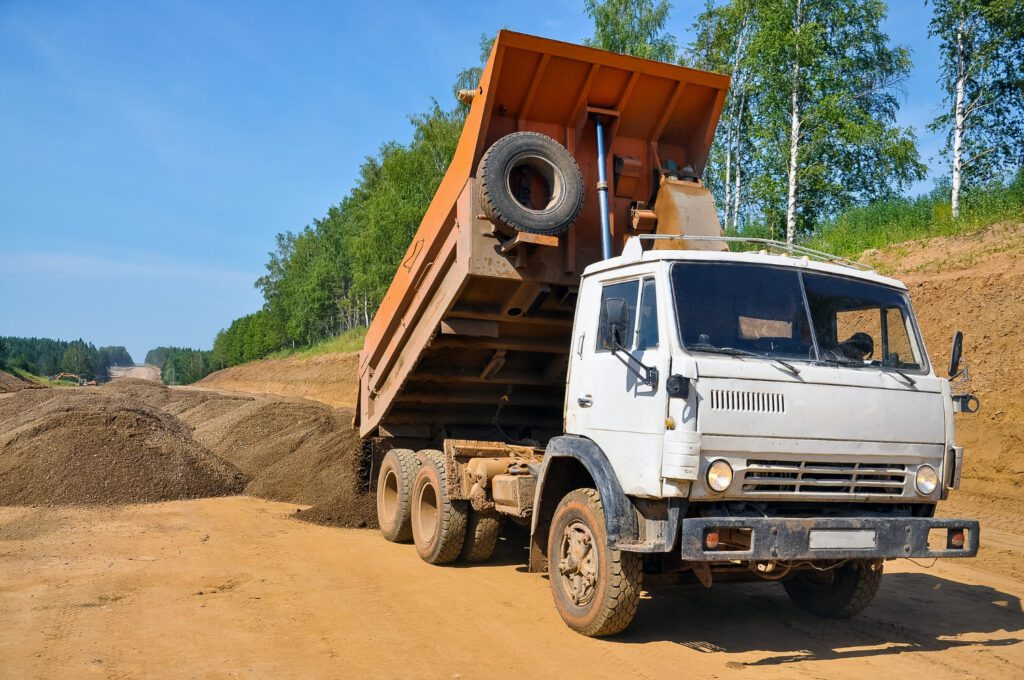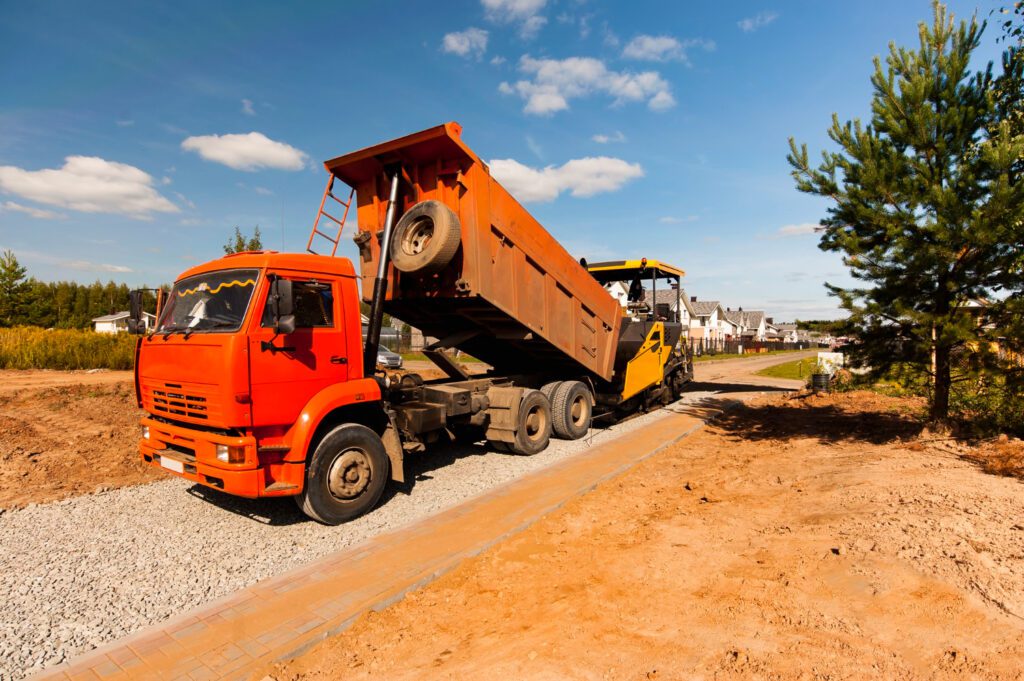Dump trucks are essential in industries like construction and mining, efficiently moving heavy loads. But with this power comes the risk of accidents—especially tipping. One of the main dangers is the potential for accidents caused by instability and tipping. These accidents can result in not only vehicle damage but also severe injuries and even fatalities. Tipping accidents often occur when the dump bed is raised, increasing the truck’s center of gravity and making it more unstable. Uneven ground, shifting loads, and sudden movements can easily tip a dump truck over. Additionally, human error during the loading and unloading process can further contribute to these risks. Understanding and mitigating these risks is essential for ensuring the safety of both the vehicle and its operator.
One innovative solution to prevent these accidents is the use of automatic lowering systems. These systems help maintain the truck’s stability by lowering the dump bed automatically when a risk of tipping is detected. By incorporating automatic lowering with anti-tip technology, we can significantly reduce the likelihood of accidents and improve overall safety. In this article, we will explore how automatic lowering systems work, their benefits, and how they integrate with advanced anti-tip technology to keep dump trucks safe.
The Risks and Challenges of Dump Truck Accidents
Dump truck accidents pose serious risks, especially in industries where heavy loads and unstable terrain are the norm. One major challenge is the high center of gravity when the dump bed is raised. As the bed goes up, the truck becomes more top-heavy and prone to tipping. This risk is amplified on uneven or unstable terrain, such as construction sites or mining areas.
Another critical issue is the shifting of loads during transportation. When materials like gravel, sand, or debris move unexpectedly, it can cause the truck to become unbalanced. This shift can be triggered by sudden stops, sharp turns, or even bumps in the road. An unevenly distributed load can also exacerbate the problem, creating more stress on one side of the vehicle and increasing the likelihood of a tip-over.
Human error is also a key factor. Operators may misjudge the stability of their load or the conditions of their route. Inadequate training or lack of awareness about the truck’s limits can lead to dangerous situations. Regular maintenance and inspections may get overlooked, allowing mechanical failures to go unnoticed until it’s too late. Understanding these risks and addressing them proactively is crucial for preventing accidents and ensuring safety.
How Automatic Lowering Systems Work
Automatic lowering systems are engineered to stop tipping in its tracks by automatically lowering the dump bed when instability is detected. These systems are equipped with sensors that continuously monitor the truck’s balance and positioning. When the system detects instability, it automatically lowers the dump bed to bring the center of gravity back down, thus reducing the risk of a tip-over.
The sensors used in automatic lowering systems are highly sensitive and can detect even slight changes in the truck’s tilt angle or load distribution. They send real-time data to the system’s control unit, which processes this information and triggers the lowering mechanism when necessary. This automated response helps to correct imbalances before they can lead to accidents.
These systems are typically integrated with the truck’s existing hydraulic controls. When a potential tipping hazard is identified, the hydraulic system is activated to lower the dump bed smoothly and safely. This process not only stabilizes the truck but also helps to redistribute the load evenly across the bed, further enhancing stability.
By using advanced technology to monitor and adjust the truck’s position in real time, automatic lowering systems play a crucial role in preventing accidents. They provide an extra layer of safety that can make a significant difference in high-risk environments. Understanding how these systems work helps operators and industry professionals appreciate their value in maintaining safer work conditions.
Benefits of Using Automatic Lowering to Prevent Accidents
The benefits of automatic lowering systems are clear—they prevent tip-overs, reduce human error, and extend the life of your truck. One of the main advantages is their ability to maintain stability in real time. By automatically lowering the dump bed when instability is detected, these systems help keep the truck balanced and upright. This proactive approach can prevent tip-overs before they happen, ensuring the safety of both the driver and the surrounding workers.
Another major benefit is the reduction of human error. Operators can sometimes misjudge the truck’s stability or fail to notice problems until it’s too late. Automatic lowering systems take the guesswork out of the equation by continuously monitoring the truck’s condition and making immediate adjustments as needed. This helps to ensure that even less experienced operators can handle their trucks safely.
Automatic lowering systems also extend the life of the truck. By preventing tip-overs and other accidents, they reduce wear and tear on the vehicle. This means fewer repairs and less downtime, which can save money and keep operations running smoothly.
Lastly, these systems can improve efficiency. When operators feel confident that their trucks are stable, they can focus more on their tasks and less on avoiding accidents. This leads to smoother workflows and improved productivity.
Integrating Automatic Lowering with Anti-Tip Technology
Pairing automatic lowering systems with anti-tip technology creates the ultimate safeguard for dump truck stability. Anti-tip devices are designed to further enhance the truck’s safety by providing additional measures to prevent tipping. When these technologies work together, they provide a powerful safety net that significantly reduces the risk of accidents.
Anti-tip technology includes sensors that detect when the truck is at risk of tipping. These sensors can identify issues such as uneven load distribution or excessive tilting. When integrated with automatic lowering systems, the anti-tip technology can trigger the lowering mechanism as soon as a problem is detected. This quick response helps correct the issue before it escalates, providing an extra layer of protection.
In addition to automatic responses, these integrated systems can also provide feedback to operators. Alerts and notifications help drivers understand what is happening and why the system is engaging. This information can guide operators in taking the proper actions to maintain stability, further reducing the risk of accidents.
Together, automatic lowering and anti-tip technology create a robust safety system. By addressing multiple aspects of truck stability, they help ensure that dump trucks remain upright and stable, even in challenging conditions. This combination enhances safety, reduces downtime, and improves overall efficiency.
Conclusion
Preventing dump truck accidents is essential for keeping your team safe and your trucks running smoothly. With automatic lowering systems and anti-tip technology, you can ensure maximum stability and safety. Automatic lowering systems play a key role by detecting instability and lowering the dump bed to prevent tipping. When combined with anti-tip technology, these systems offer a powerful solution that addresses multiple stability challenges.
Regular use of these advanced technologies helps ensure the safety of operators and reduces the risk of accidents. By automating responses to potential tipping hazards, they minimize human error and provide real-time stability adjustments. This not only protects workers but also extends the lifespan of the trucks and improves productivity.
Understanding the benefits and functionalities of automatic lowering and anti-tip technology can make a significant difference in dump truck operations. For those looking to enhance their fleet’s safety and efficiency, exploring these solutions is a wise investment. Consider contacting Wink Anti Tip to learn more about how our advanced technology can keep your dump trucks stable and safe on the job.




0 Comments